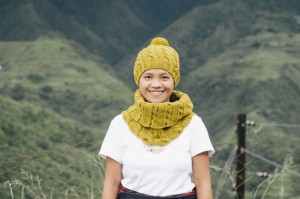In the wake of disaster in the Philippines, many designers are focused on core issues such as emergency shelter, provision of food and other necessities. And rightly so. Services to people in dire circumstances is a classic form of design activism. Countless designers have contributed to disaster relief, for example, through fast, inexpensive emergency shelter, water filters and solar stills, and even ways to house livestock through harsh winters.
There are also a number of disaster relief design proposals for alternative toilets and sanitation solutions (a cardboard fold-up toilet comes to mind) and for rebuilding–devising simple construction techniques that unskilled refugees or locals can use so that jobs go to them rather than imported workers.
But having seen the pictures, made donations, and gotten in touch with my friends who have connections in the Philippines, as I’m sure you have, I wanted to share an inspiring social entrepreneurship story of fashion design originating from the Philippines. The Ricefield Collective involves Philippine women in learning to knit and developing products such as hats and scarves.
 The women are farmers but want to supplement their variable agriculture income with other skills and market potential. Their high design hats and scarves are now breaking into the market place through a kickstarter campaign, aggressive social media activity and a commitment to design qualty and inspiration from local meaning, including using the makers as models and creating motifs based on traditional themes.
The women are farmers but want to supplement their variable agriculture income with other skills and market potential. Their high design hats and scarves are now breaking into the market place through a kickstarter campaign, aggressive social media activity and a commitment to design qualty and inspiration from local meaning, including using the makers as models and creating motifs based on traditional themes.
This article from the Huffington Post highlights some of the very real barriers faced by these women, now amplified by the devestation of Typhoon Haiyan.
—
If you find this post useful, please pass it on. Also check out the two recent Thursday Inspiration posts on Levi Strauss and slow design and the UK guidance on education for sustainable development